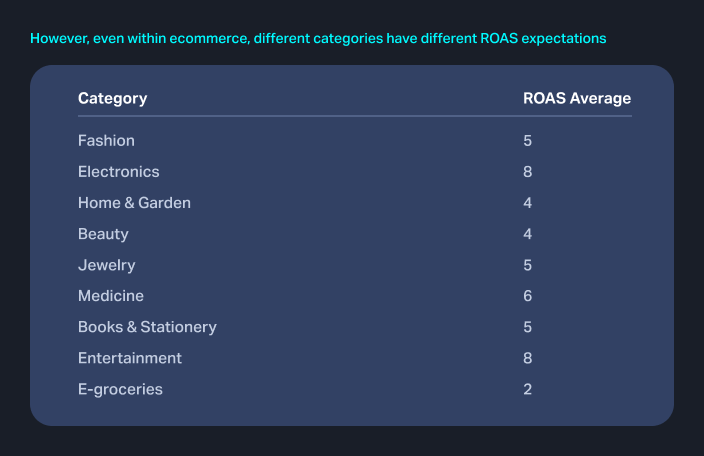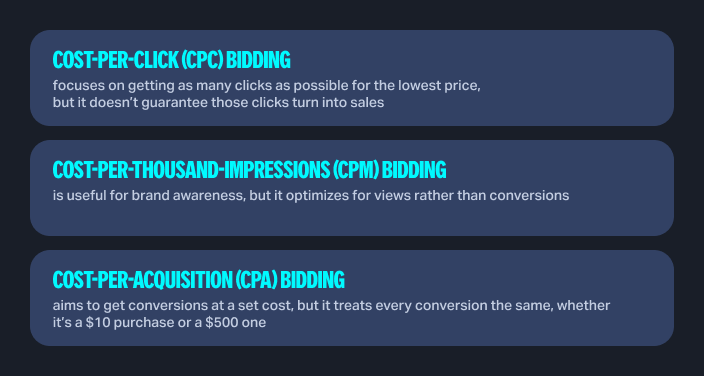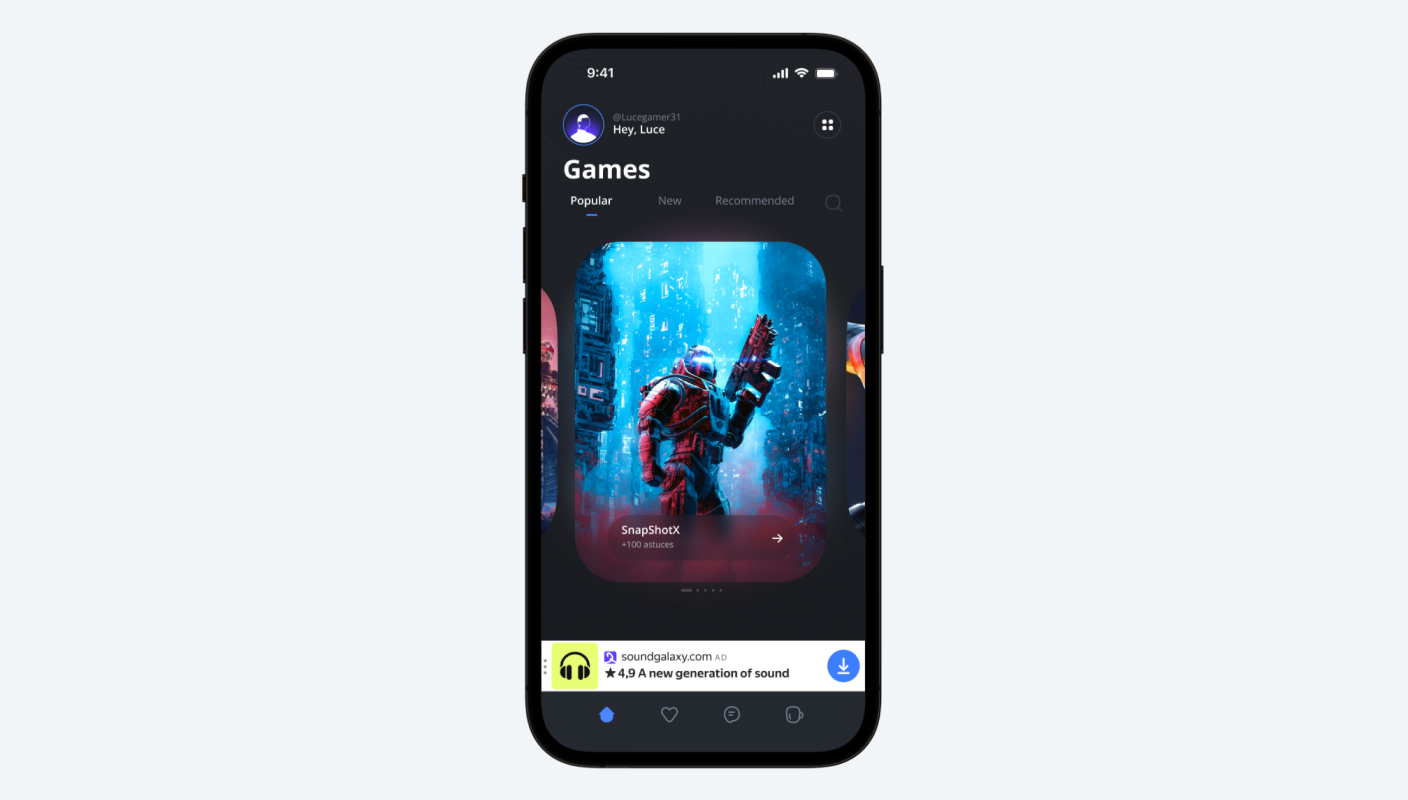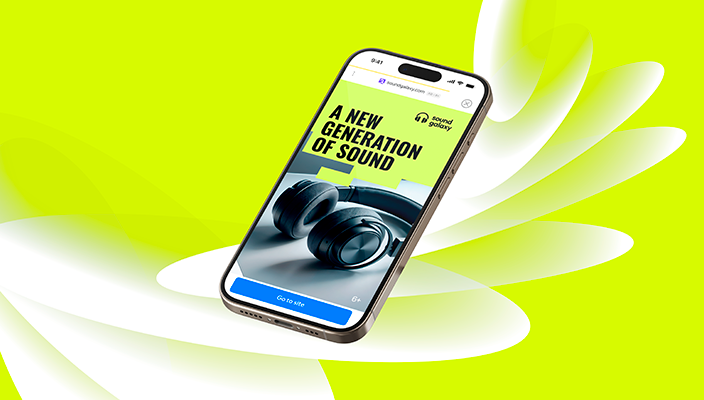How to Increase ROAS (and Stop Wasting Your Ecommerce Budget)

Everyone wants their ads to work harder. No one launches a campaign thinking, let’s see how much we can spend without getting anything back.
But that’s exactly what happens when ROAS isn’t where it should be. Maybe you're watching costs creep up while conversions stay flat. Maybe you’re seeing a decent ROAS, but not enough to scale. Maybe your campaigns perform great one month and tank the next, and you're not sure why.
So, how do you increase ROAS and get more revenue from your budget? This guide will help you figure out how to increase ROAS, what’s holding your returns back, and what changes can make your ad spend more profitable.
ROAS 101: What is it?
ROAS stands for Return on Ad Spend. It measures how much revenue you earn for every dollar spent on advertising. In simple terms, it shows whether your ads are bringing in more money than they cost.
How to calculate ROAS
To calculate ROAS, divide the revenue from your ads by how much you spent on them. Use this formula:
ROAS = Revenue from ads ÷ Ad spend
For example, if you spend $1,000 on ads and those ads generate $4,000 in revenue, your ROAS is:
4,000 ÷ 1,000 = 4
This means for every $1 spent on ads, you made $4 in revenue.
ROAS can be expressed in two ways:
- As a ratio: ROAS of 4:1 (or just 4) means you made 4 times what you spent.
- As a percentage: ROAS of 400% means the same thing, just written differently.
Pro tip: To calculate ROAS as a percentage, all you need to do is multiply the formula by 100.
A high ROAS usually means your ads are bringing in more revenue than they cost, which is good, but that’s not always the full picture.
When is ROAS considered high or low?
What counts as a high or low ROAS depends on the industry, pricing model, LTV, and costs of running the business. Generally:
- A ROAS below 2 is usually too low to be profitable.
- A ROAS of 2 to 3 is common in competitive industries and can be profitable if margins are good.
- A ROAS of 4 to 6 is considered strong for most ecommerce brands.
- A ROAS of 10 or higher can look impressive but might mean the business isn’t spending enough to reach more customers, and could be missing out on more profit.

These numbers aren’t strict targets. They are benchmarks to help you compare your performance. A much better way to determine if your ads are truly profitable is by looking at break-even ROAS.
What is break-even ROAS and how to calculate it
Break-even ROAS is the minimum ROAS you need to cover all costs and avoid losing money. If your ROAS is below this number, your ads are costing you more than they are making.
The formula for break-even ROAS is: Break-even ROAS = 1 ÷ Profit Margin
Profit margin is calculated as: Profit Margin = (Revenue – Total Costs) ÷ Revenue
For example, if you sell a product for $100 and it costs you $75 to produce and deliver it, your profit margin is: (100 – 75) ÷ 100 = 0.25 (or 25%)
Based on this profit margin, break-even ROAS is calculated as: 1 ÷ 0.25 = 4
This means you need a ROAS of 4 just to break even. Anything lower means you are losing money, while anything higher means you are profitable. Break-even ROAS can also be expressed as a percentage. That said, if your ROAS isn’t where you need it to be, the solution isn’t always to spend more or cut budgets. The way ads are structured, who sees them, and what happens after someone clicks all play a role in how much revenue they bring in. Small adjustments can make a big difference.
Now, let’s look at how to increase ecommerce ROAS, and what changes can help make your ad spend more effective.
8 ways to increase ROAS for ecommerce (and how to do them right)
Cutting costs or increasing the prices of your product might improve your ROAS, but it’s usually just a temporary relief. Your ROAS is directly tied to how efficiently your ads turn spend into revenue.
If campaigns aren’t reaching the right audience, if ad platforms aren’t optimized, or if the customer experience after clicking isn’t good enough, no amount of budget cuts or price increases will create sustainable growth.
Fixing this starts with understanding what actually moves the needle. That’s what we’ll treat below.
So, here are 8 key ways to increase ROAS for your ecommerce business.
1. Optimize your product feed for higher ad performance
Your product feed is the backbone of your ecommerce advertising. It’s a file containing all the essential details about your products—titles, descriptions, prices, images, and more. When your feed is well-optimized, the market platforms can match your products to relevant searches more effectively, and increase the chances of reaching interested buyers.
Andrew Martin, a UK-based furniture brand, saw firsthand how much a well-structured product feed could change their ad performance. After refining their feed on Facebook and Instagram—organizing products by color and style, filling in missing details, and improving targeting—they saw a 46% jump in ROAS in just two weeks.
Fixing your product feed doesn’t require a complete overhaul, just a few key adjustments:
- Write clear, detailed product titles and descriptions so platforms can match them with the right searches. Instead of “Black Sofa,” go for “Modern Black Leather Sofa with Stainless Steel Legs.” More detail means better visibility.
- Use high-quality images to make your products stand out.
- Make sure pricing and stock levels are always up to date to avoid showing unavailable items. Running ads on out-of-stock products wastes budget and frustrates shoppers.
- Categorize products correctly so they show up in the right ad placements.
- Use custom labels like seasonality, best selling products, etc. This allows you to adjust bids based on performance, push certain items during peak times, or pull back on lower-value products to improve ROAS
- Choose the right feed format. Different ad platforms have specific feed requirements. If your feed isn’t formatted properly (missing fields, incorrect values, or wrong file types), products may not show up in ads at all
2. Focus on high-intent audiences and smarter targeting
Broad targeting might seem like a good way to reach more people, but it’s one of the easiest ways to waste your ad budget. If your ROAS is low, there’s a good chance your ads are being shown to people who were never likely to buy in the first place. A better approach is focusing on high-intent audiences—shoppers who are actively looking for what you sell or have already shown interest in your brand.
One of the best places to start is first-party data. People who have visited your site, added something to their cart, or made a purchase before are far more valuable than cold audiences.
Retargeting these shoppers keeps your brand in front of them when they’re closer to making a decision. Instead of showing the same ad to everyone, you can refine your audience using:
- CRM data and email lists. If someone has already shared their email with you, they’ve expressed interest. Running ads that match what they browsed or bought before is far more effective than generic targeting.
- Past purchase behavior. Someone who bought running shoes six months ago might be looking for new ones now.
- Engagement levels. A person who spent five minutes on your site and visited multiple pages is much more likely to convert than someone who bounced after three seconds.
Note
Do not overexpose your retargeted audience to your ads. This causes ad fatigue and can backfire ROAS-wise. If someone sees your ad too many times without buying, they likely aren’t going to convert. Setting frequency caps ensures you’re not wasting money on shoppers who have already decided against purchasing.
Lookalike audiences are another option offered by most ad platforms. Instead of guessing who might be interested, they analyze your best customers and find people with similar shopping behaviors or characteristics.
3. Optimize your ad creatives for conversions
Even with the right audience and budget, ads won’t convert if they don’t grab attention and make people want to click. Your ad’s visuals and messaging directly impact conversions—sometimes, even small tweaks can lead to noticeable improvements.
Case in point: MOOD Innovations, a wellness brand, revamped their social media ad creatives by focusing on more engaging visuals and messages. This simple change led to a 122% increase in return on ad spend (ROAS) in just three days.
How can you refine your ad creative for better results?
- Use high-quality visuals. Clear, eye-catching images and videos stop people from scrolling. Lifestyle shots (like a sneaker being worn on a run) often perform better than plain product images.
- Keep ad copy short, direct, and benefit-oriented. A good ad gets the point across fast. Instead of "Premium handcrafted leather boots with superior durability and comfort," say "Handcrafted leather boots built to last."
- Make the call to action (CTA) obvious. "Shop Now," "Claim Your Offer," or "Get Yours Today" tells shoppers exactly what to do next. Adding urgency helps too. "Limited Stock Available" gets more clicks than just "Buy Now."
- Refresh creatives often. Ads lose effectiveness when people see the same thing too many times. Swapping images, headlines, or CTAs keeps engagement high.
- A/B test everything. Swap out different visuals, headlines, and CTAs every few weeks. Run short tests, measure engagement, and double down on what works.
- Test different creative formats. For example, try carousel ads, dynamic product ads, and animated banners.
4. Use predictive analytics to scale efficiently
Predictive analytics helps you make smarter decisions by identifying patterns in your data and forecasting what’s likely to work next.
This means you can:
- Spend more on high-converting products rather than spreading your budget too thin.
- Target shoppers who are most likely to buy.
- Adjust bids based on expected returns, so you’re not overpaying for clicks that won’t convert.
Many brands already use predictive analytics to refine their strategy. L’Oréal, one of the world’s leading cosmetic brands, uses an AI-enabled consumer intelligence platform to stay ahead of beauty trends and augment its product development with predictive analytics. To maintain its lead in such a competitive industry, L’Oréal predicts beauty trends at least 6 to 18 months before they emerge.
The more data you feed into your system, the better it gets at forecasting results, allowing you to scale without blindly increasing your budget.
5. Improve your website and checkout flow
A slow or complicated website makes shoppers leave before they buy. If pages take too long to load or checkout feels like trouble, people will abandon their carts and move on. A few small changes can make a big difference in keeping visitors on your site and getting them to complete their purchase.
- Speed up your website. Pages that load in 1–2 seconds have an average bounce rate of 9%, but at 5 seconds, the bounce rate jumps to 38%. Keeping load times under 2 seconds improves both conversions and ad performance.
- Avoid too many redirects. Every extra step adds more loading time. Make sure links take people directly to the page they need.
- Make checkout simple. Too many steps = abandoned carts. The average checkout process asks for 11 form fields, but most sites only need 8 or fewer.
- Offer guest checkout. Many shoppers leave when they’re forced to create an account before buying. Let them check out quickly, then offer account creation after purchase.
- Show progress indicators. If your checkout has multiple steps, let customers see where they are in the process so they don’t get frustrated and give up.
- Be upfront about costs. Hidden fees at checkout are a major reason people abandon their carts. Show shipping and taxes early to avoid surprises.
6. Increase average order value to maximize returns
A higher Average Order Value (AOV) improves ROAS without increasing ad spend. If a customer clicks on your ad, the cost of that click stays the same whether they spend $20 or $100—but the revenue you earn from that click can be drastically different.
This isn’t about raising prices. Like we said, that’s temporary and might chase customers away. It’s about encouraging customers to buy more in a way that feels natural and beneficial to them. Some (good) ways to increase AOV include:
- Product bundles: People love a good deal. Offering a set of related items at a slight discount makes it easier to sell more in one go. Instead of selling a single shampoo, bundle it with a conditioner and styling product at a better price than buying each separately.
- Free shipping thresholds: Shoppers are more likely to add extra items to their cart if it helps them avoid shipping fees. If your average order is $40, setting free shipping at $50 can push customers to spend more.
- Personalized recommendations: Showing "frequently bought together" items or upselling a premium version of a product can increase cart size. Someone buying a phone case might also grab a screen protector if it’s suggested at checkout.
- Volume discounts: Encouraging bulk purchases with "Buy 2, Get 1 Free" or small discounts for buying more (like 10% off orders over $100) can boost order value without feeling forced.
The good part is it can also help you reach new customers, as old ones share the news of these perks to each other.
7. Launch ad campaigns with ROAS-optimized bidding
Not all bidding strategies are built to maximize revenue.

A ROAS-optimized bidding strategy is different though. It prioritizes ad spend on the conversions that bring in the highest returns.
So, unlike other bidding strategies that treat all conversions equally, ROAS bidding assigns value to different purchases—increasing bids for high-value conversions and lowering bids where returns are lower. This means:
- If a product has a history of generating strong revenue, bids automatically increase to capture more sales.
- If a click is unlikely to lead to a profitable purchase, the system reduces bids to avoid wasted spend.
- The budget shifts toward the products, audiences, and placements that consistently bring in higher revenue.
Instead of chasing more traffic or lowering acquisition costs at any price, this strategy balances spending and revenue to create sustainable profitability.
Pro tip: Yango Ads Space offers a dynamic ROAS-based bidding model that continuously adjusts bids to help advertisers reach their revenue goals without overspending. Instead of keeping bids fixed, the system adapts to how ads are performing, so your budget is used efficiently.
8. Use an ad platform that offers pay-per-conversion advertising
Most ad platforms charge you for clicks or impressions, whether they lead to sales or not. With pay-per-conversion advertising, you only pay when a real customer makes a purchase or completes a valuable action.
Yango Ads Space runs on a pay-per-result model, so you’re charged based on actual purchases, not just visits. This means better control over costs and less wasted spend on empty clicks.
- Lower acquisition costs by prioritizing conversions over clicks.
- Adaptive budget allocation, where spending is directed toward high-converting products, placements, and audiences.
- Flexible payment terms. Instead of paying upfront, advertisers have post-payment options, allowing you more time to test ads and balance cash flow.
- A ROAS-based billing option, allowing advertisers to pay based on actual revenue generated
One more thing. Unlike other platforms that focus heavily on search and last-click attribution, Yango Ads Space takes a more complete approach to conversions. It doesn’t just rely on users already searching for a product; it helps capture interest earlier through display ads that appear across websites and apps, and assisted conversions that re-engage people who showed interest but haven’t bought yet.
The one change you can make today for better ROAS
ROAS isn’t spending less; it’s spending smarter. Every part of your strategy, from who sees your ads to what happens after they click, affects whether that ad spend turns into revenue.
If there’s one thing to take away, it’s this: the right ad model makes all the difference. Paying for clicks is a gamble. Paying for conversions? That’s just common sense.
Discover where digital advertising is headed next



